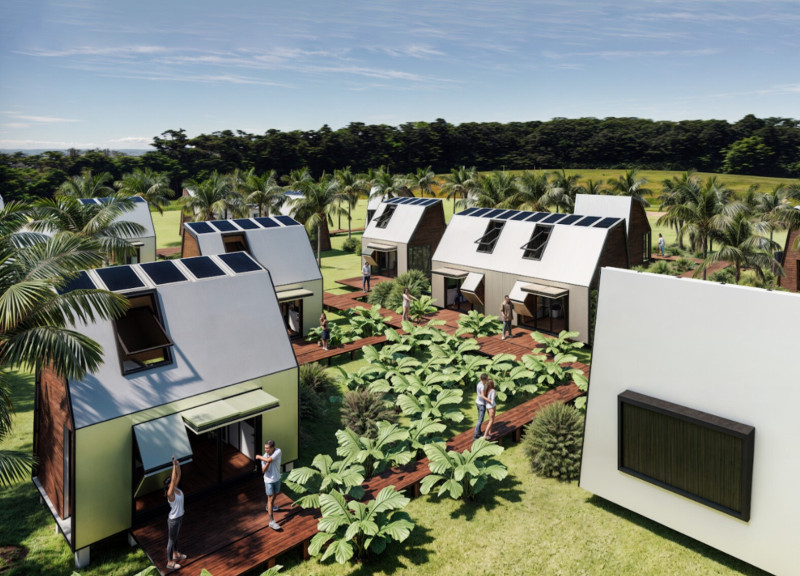5 key facts about this project
Modular Design and Sustainability
The project’s core innovation lies in its modular design. Each unit functions independently yet can seamlessly connect with others, creating versatile living arrangements. This modularity supports an environment where social interactions can thrive while allowing personal space when necessary. The architecture integrates sustainable practices through its material choices, including energy-efficient wall panels and recyclable components. The design incorporates features like vegetation panels that contribute to biodiversity and improved air quality. These elements collectively embody a forward-thinking approach, prioritizing ecological considerations alongside user needs.
Adaptive Living Areas and Functional Spaces
The internal layout of the UP LIFT Home and Shelter is strategically designed to maximize usability and comfort. The multifunctional rooms serve dual purposes, accommodating different activities without sacrificing spatial integrity. Key components include well-defined living, kitchen, and bathroom modules that facilitate daily routines while maintaining flexibility for future alterations. Fixtures are adaptable, allowing for space optimization in various scenarios. Special attention is given to the connection of indoor and outdoor spaces, as openings and layout encourage natural light and airflow, contributing to an overall pleasant living environment.
For further insights into the architectural plans, sections, designs, and ideas that characterize this project, explore the detailed presentation materials. An in-depth analysis can provide valuable context and understanding of the UP LIFT approach to contemporary housing.


























